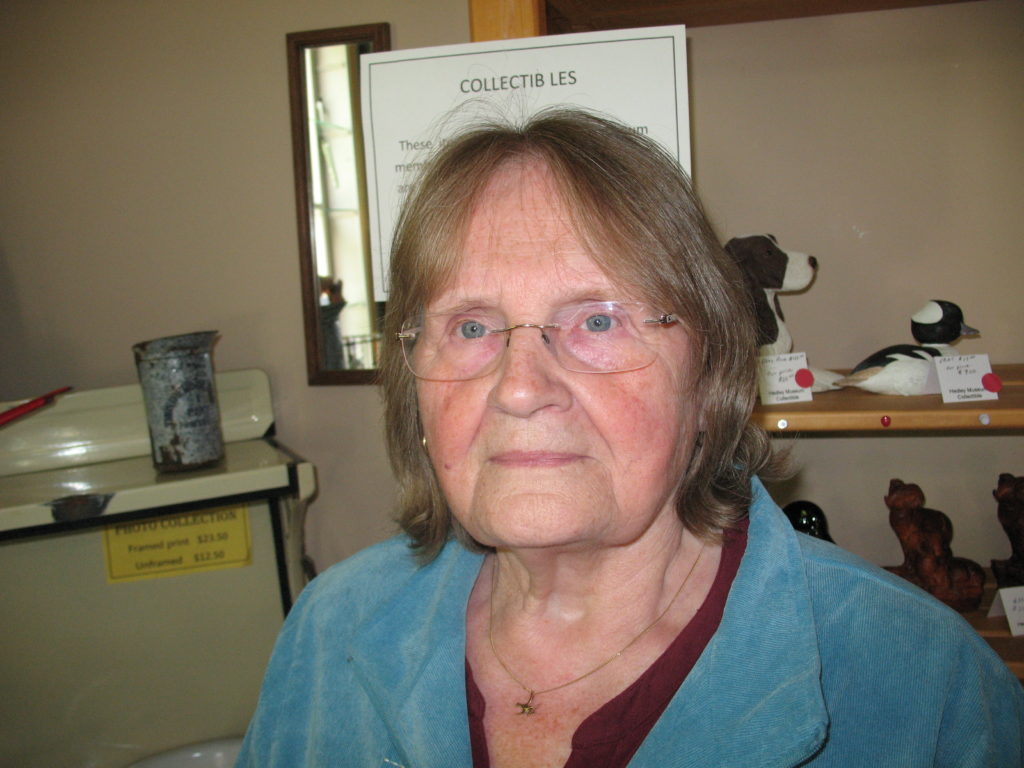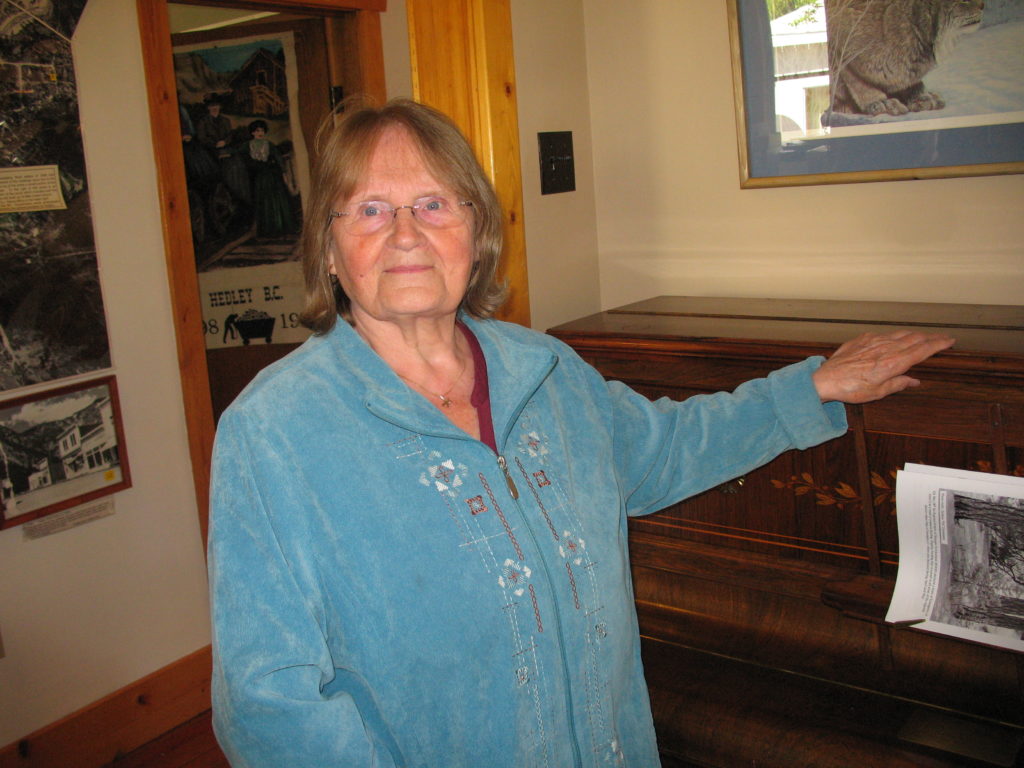
“We come back to Hedley every second year,” Gwen Fraser told Linda and me in a telephone conversation from her home in Nanaimo. “I make my husband drive up and down every street. I get out of the car and walk around. I talk with people and when they know I lived here in the 1940’s, they have a lot of questions. It’s like coming home.”
Gwen was born in the Princeton hospital in 1939, 10 minutes ahead of her twin brother Glenn. Her memories of Hedley are those of a young girl growing up untarnished in a community where gold was king. “My Dad worked as an accountant, first at the Canty mine. When it closed he went to the Mascot. We lived next to the staff house on the corner of Daly and Irene. A number of mine workers lived there and they had a cook. We’d often go and talk with the cook.” Not having television, they were actors in their own real life reality show. She and her friends roamed about in their rustic, geographically constricted world, never troubled by thoughts of being molested or kidnapped.
“There were a lot of children in town then,” she said, “and the 2 story Hedley school was full. For some of those years, I didn’t really learn a lot because I had rheumatic fever. I couldn’t do much and the teachers didn’t expect much. Some days I mostly did puzzles. They passed me anyway.”
Beginning in 1900, six hotels were built in Hedley. Over the years they all burned to the ground. Gwen recalls that in her time one, (The Great Northern), was still intact and functioning. “The workers put the empty beer bottles out behind the hotel. We’d go back there and help ourselves. Then we’d go in the front door and sell them to the hotel.” Maybe she wasn’t entirely untarnished.
Unsupervised, in winter they gravitated to the river. “We clambered all over the ice when it piled up. A few times, one of us broke through.” In warmer weather, they sought adventure elsewhere. Curious about the cemetery, they at times played among the headstones and white crosses.
On one occasion their play became overly realistic and produced a serious consequence. Gwen’s twin brother was hit in the eye by an arrow. A local physician, Dr Ride, had an office on the upper floor of what is now Rod Moncrieff’s building. This case was well beyond his level of expertise, however. Because the Hope-Princeton Highway was not yet completed, the family made an emergency run to Vancouver via the much longer Fraser Canyon route. In spite of the efforts of the specialist, Glenn’s vision in that eye remained significantly impaired. Even so, he later trained as a welder and worked for the City of Vancouver for many years.
The gold mines attracted a substantial population and Gwen remembers that Hedley had a police officer. “When my dad wanted to buy a new car in Keremeos, he took us kids along, and also the officer. Probably he borrowed a car for this and needed someone to drive it back. On the way to Keremeos the officer spotted a car travelling well over the speed limit. He ordered dad to catch it. The surprised driver stopped and received a ticket. He had not realized the long arm of the law could reach this far out of Hedley.”
Much of what we take for granted now was entirely out of Gwen’s experience . “I never saw a plane fly overhead. The first time I ever saw a plane was when one landed in a field just outside Hedley. Lots of people went to have a look. We walked around it again and again.”
Gwen remembers the Hedley flood of 1948. “Some families moved into tents on the golf course. Us kids thought it was great fun.”
When the Mascot mine shut down operations in 1949, Gwen’s family moved on. Later, as a young adult, she met Doug at a party next door and they eventually got married. They lived 20 years on Vancouver Island’s west coast where Doug was a lighthouse keeper. “There was only one other family.”
At the end of our conversation Gwen again said, “when we come to Hedley, I feel I’ve come home. There’s a sense of peacefulness, of community. Sometimes, I’d like to move back.”

Hedley would welcome her back any time.

One thought on “Recollections Of Hedley In The 1940’s”